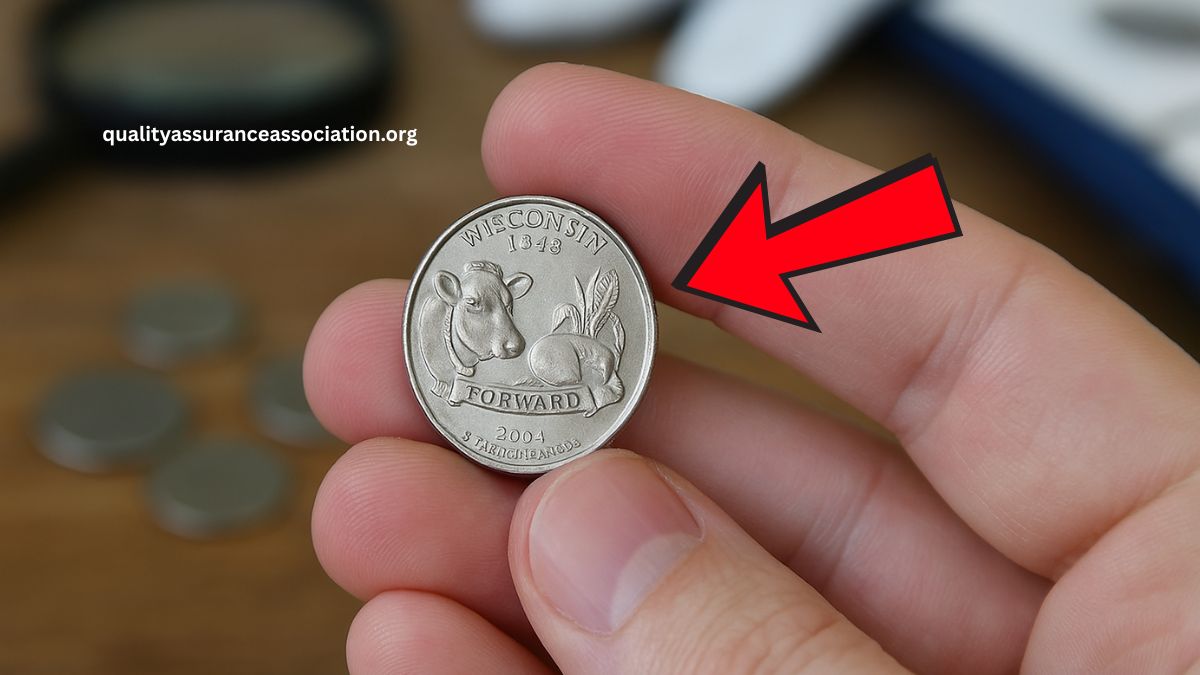In an unexpected twist, a seemingly ordinary coin from your pocket change—the 2004 Wisconsin State Quarter—has become one of the most sought-after collectibles in the United States.
Thanks to a unique minting error, this quarter has skyrocketed in value, with some specimens fetching thousands of dollars at auctions. If you have one of these quarters, you might be holding a small fortune.
The Secret Behind the Quarter’s Sudden Fame
The buzz centers around a subtle yet significant flaw: an extra leaf on the corn stalk depicted on the coin’s reverse side. This anomaly exists in two variations: the “High Leaf” and the “Low Leaf” errors.
These imperfections occurred during the die polishing process at the Denver Mint, resulting in a rare misprint. While millions of standard Wisconsin quarters were produced, only a limited number contain this mistake, making them highly valuable to collectors.
From Everyday Change to Unexpected Windfall
Stories are emerging of individuals discovering these rare quarters in the most unexpected places—old coin jars, forgotten drawers, or even as spare change from everyday transactions.
One fortunate individual reportedly sold their misprinted quarter for over $2,000 at auction, while others have seen online listings demanding even higher prices, especially for coins in pristine condition.
The discovery has sparked a nationwide search, with both seasoned collectors and casual coin-checkers sifting through their change in hopes of striking it lucky.
Why the Sudden Surge in Interest?
The renewed fascination with this quarter can be attributed to several factors:
- Economic Uncertainty: In times of financial instability, collectibles like rare coins often see increased interest as alternative investments.
- Growing Interest in Collectibles: The collectibles market has been booming, with coins being a significant part of this trend.
- Power of Social Media: Platforms like TikTok, Reddit, and YouTube have amplified awareness, turning a once-overlooked coin into a viral sensation.
Collectors note that coins with minting errors, historical significance, or unique designs often see a spike in value once public attention shifts toward them—and the 2004 Wisconsin quarter fits all three criteria.
How to Spot the Valuable Quarter
If you’re eager to join the hunt, start by examining any 2004 Wisconsin quarters from the Denver Mint (marked with a small “D” beneath “In God We Trust”).
Focus on the left side of the corn husk—if you spot an extra leaf, either near the bottom (Low Leaf) or higher up (High Leaf), you may have a rare find.
Experts also recommend checking the coin’s condition, as uncirculated or lightly worn quarters tend to command higher prices.
Value Breakdown: High Leaf vs. Low Leaf
The value of these error quarters varies based on their condition and the type of error:
| Error Type | Condition | Estimated Value |
|---|---|---|
| High Leaf | Circulated | $50 – $500 |
| High Leaf | Uncirculated | $1,000 – $2,500 |
| Low Leaf | Circulated | $50 – $600 |
| Low Leaf | Uncirculated | $1,200 – $6,000 |
Note: Values are approximate and can fluctuate based on market demand.
A Reminder of Hidden Value in Everyday Objects
In an era where digital payments dominate, the sudden craze over a 25-cent coin serves as a charming reminder that treasure can still be found in the most ordinary places.
Whether it’s an old coin collection or a quarter received as change, there’s always a chance that something seemingly mundane could hold unexpected worth.
The 2004 Wisconsin State Quarter, once an ordinary piece of change, has transformed into a coveted collector’s item due to a unique minting error. With values reaching up to $6,000, it’s a compelling example of how everyday objects can hold hidden treasures.
So, the next time you receive a handful of coins, take a closer look—you might just be holding a small fortune in the palm of your hand.
FAQs
How many of these error quarters were minted?
While the exact number is unknown, estimates suggest that a relatively small quantity of these error coins were produced, making them rare and valuable.
Are these error quarters still in circulation?
Yes, some may still be in circulation, which is why checking your change could potentially lead to a valuable discovery.
How can I authenticate and appraise my quarter?
It’s advisable to consult with a professional coin grading service or a reputable coin dealer to authenticate and determine the value of your coin

